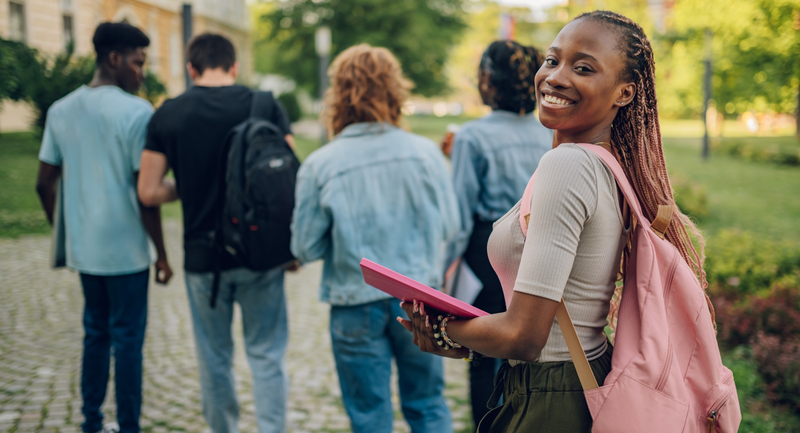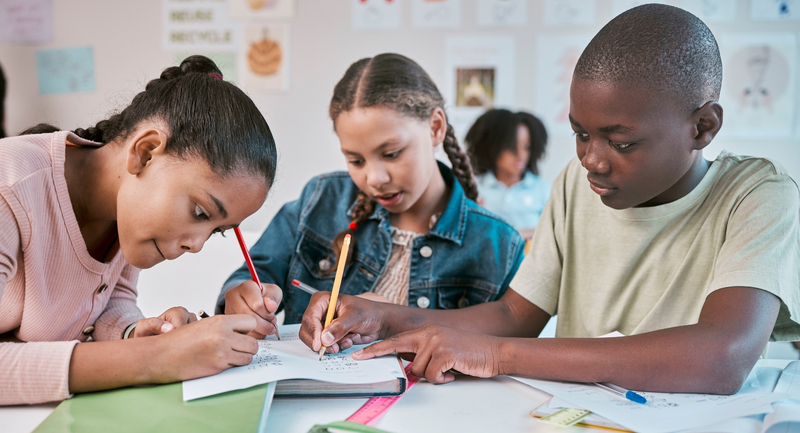My entry point into justice-centered work in education comes from my own experience as a student. School was where I experienced dehumanizing language, institutional racism, and invisibility. It’s where I learned about power and how it could be used as a weapon of marginalization. School was also where I engaged in the heavy lifting of speaking my truth to adults who were unequipped to see my Blackness or teach in ways that honored my cultural experiences.
As an educator, I am aware that classrooms have the potential to be sources of joy, yet as a Black woman, I also know that educational spaces can cause harm when the humanity of youth is not a focal point. As we approach the start of a new school year, it is important to consider how we show up in our efforts to create identity-affirming environments—starting with mirror work.
Building a Critical Consciousness Through Mirror Work
Mirror work is a self-reflection process that helps us understand how we see the world through our ideologies and beliefs. It requires us to build a critical consciousness. Paulo Freire, in Pedagogy of the Oppressed, describes the work of cultivating a critical consciousness as the ability to recognize and analyze systems that create and hold inequities in place. We must be aware of how systems in educational spaces benefit some groups and harm others, and be cognizant of our power to create affirming, responsive environments. This work involves self-inquiry to understand how we have been conditioned to accept differences (e.g. racial, ability, economic, etc.). We must do the internal work of deducting why we respond or interact in certain ways as we navigate relationships with students and their caregivers.
Mirror work also asks us to reflect on the political and historical contexts in which we work. We cannot sprint into actions without educating and grounding ourselves in historical contexts that influence how the inequalities of today were shaped. The unequal outcomes within educational systems reflect a history of inhumane, government-sanctioned laws that we cannot disregard in discussions about equity.
Committing to Equity-Centered Actions
Awareness of injustices and historical contexts should ultimately translate into actions and advocacy for equitable educational systems. We must transform knowing into doing. In education, the term “equity” is often parroted with varied interpretations. Ambiguous definitions of educational equity leave people with no option but to create narratives and understandings of equity from their own contexts. When equity is used as a buzzword, it omits deeper conversations about institutional racism and identity threats inherent in some curriculum or instructional practices.
As educators, we have an obligation to nurture our students’ potential, to be responsive to their needs and humanity. Equity is a commitment to activism and purposeful actions to shift power, resources, and opportunities to individuals or groups who have been marginalized by human-created systems. It also involves collective work to remove oppressive structures that do not allow youth to thrive or tap into their genius.
Here are some specific actions educators can take to advance equity. (They are described in more depth in my new book, Identity Affirming Classrooms: Spaces that Center Humanity).
- Find your people: Be a part of a group that critically examines educational systems to improve student outcomes, and commits to just actions and accountability.
- Identify and interrogate inequities: Name practices that perpetuate harm and unequal outcomes, and continuously question initiatives that lack purpose.
- Listen and act with intentionality: Create spaces and networks for listening and learning to understand the impact of actions, centering the voices of youth and their caregivers with the purpose to co-construct just environments.
- Reimagine, eradicate, and rebuild: Cultural shifts include adaptative work that is born from our imaginations. Articulate what schools could be with humanizing approaches and build a vision with intentional actions that center humanity.
Why Environment Matters
Every school environment communicates a message about belonging and has the potential to serve as an invitation to learn. In the book Cultivating Genius, Gholdy Muhammad argues that if educators want students to recognize their brilliance, “they must step into schools and classrooms where intellectualism is deeply seeded, expected, and nurtured” (p. 108).
The physical classroom environment can be intentionally designed to foster curiosity and acknowledge the lived, cultural experiences of youth. I recently engaged in action research, interviewing students to learn about the elements needed to design an identity-affirming environment. Through these conversations, it was evident that students wanted teachers to do more to honor their identities in the construction of classroom environments (including artifacts, photographs, documentation of interests, etc.).
Consider the following reflective questions as you think about the layout and design of classroom spaces:
- What does your classroom invite students to do? (e.g., read, collaborate, etc.)
- What values are being communicated based on the arrangement of space and environmental décor?
- How are the identities of learners and their capabilities reflected in the classroom design?
When students’ humanity is at the core of our praxis, the perspectives and feedback of youth are incorporated in the design of shared environments. As an educator, you can remove yourself from the trap of consumerism that influences you to buy all the things and make your classroom a blank canvas for you and your students to design together. In other words, build relationships with students first and ask what would help the environment feel like a space of belonging. You can have them pitch ideas on an anchor chart or see what general themes emerge to determine what you may want to create together.
Centering Humanity
As we prepare for another year of unpredictability, it is necessary for us to recognize the human condition in our work with youth. When do this, we acknowledge that students are emotional beings who are trying to understand their identities as learners while existing in a world situated in a constant state of crisis. Creating opportunities for students to express their experiences and interactions with the world is a way we can build lasting relationships and a culture of care.
When developing lessons, consider how your learning objectives connect to the headlines that weigh heavy on students’ hearts. Teaching is human work, and we cannot be numb to the inhumanity that exists in the world nor neglect opportunities to hear from those we serve. Before jumping into content at the beginning of the year, commit to the work of seeing your students as fully human. Create room for dialogue where you ask students to process or perhaps share (if comfortable) their hopes and dreams for the school year and their classroom community.
We must center humanity, hold each other accountable out of love for humanity, and commit to just actions to create the spaces students deserve.








